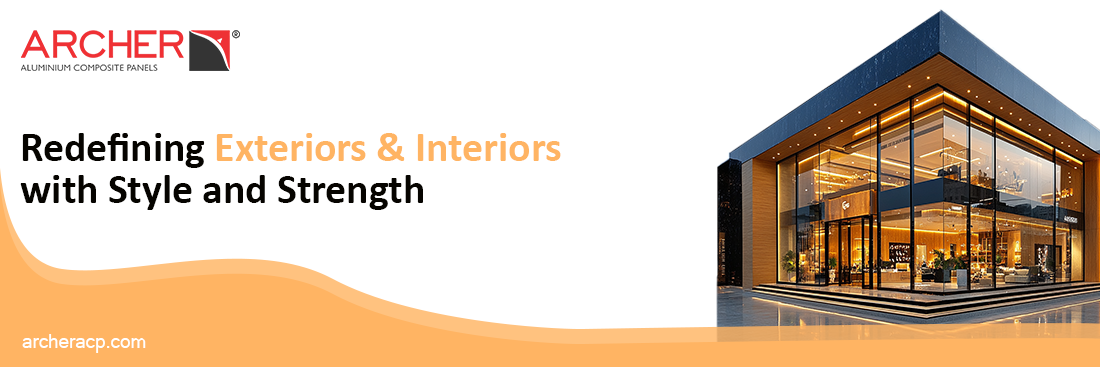

Aluminium Composite Panels (ACP) have become a game-changer in modern architecture. Beyond offering sleek aesthetics, they provide unmatched versatility and durability, making them a preferred choice for architects, builders, and designers worldwide. Let’s explore how ACP work is revolutionizing both exterior and interior spaces.
Building Design with ACP
ACP sheets consist of two aluminium layers bonded to a non-aluminium core, creating a lightweight yet robust structure. This innovative composition allows for a wide range of applications, from contemporary facades to sophisticated interior designs.
Revolutionizing Building Façades
One of the primary applications of ACP is exterior cladding, redefining how buildings look and perform. Here’s why:
Aesthetic Versatility: Available in an extensive range of colors, finishes, and textures - including wood, stone, marble, and metallic - ACP panels enable architects to craft visually striking and distinctive designs that enhance a building’s appeal.
Weather Resistance: Designed to withstand extreme weather conditions, ACP panels offer protection against UV rays, heavy rainfall, and fluctuating temperatures, ensuring long-lasting durability.
Thermal Efficiency: ACP cladding provides excellent insulation, helping maintain indoor temperatures and reducing energy consumption, which in turn lowers utility costs.
Maintenance: The smooth, non-porous surface of ACP panels requires minimal upkeep, making them a practical and cost-effective solution for long- term use.
Enhancing Interior Spaces with ACP
ACP isn’t just for exteriors - it plays a crucial role in modern interior design as well.
Wall Panels and Partitions: ACP sheets are widely used for sleek wall panels and partitions, bringing a contemporary touch to residential and commercial interiors while ensuring durability and ease of maintenance.
False Ceilings: The flexibility of ACP makes it an excellent choice for false ceilings in offices, homes, and retail spaces, offering a blend of aesthetics and functionality.
Furniture and Fixtures: From modular furniture to intricate fixtures, ACP facilitates the creation of lightweight yet sturdy designs that merge functionality with modern appeal.
Interior Signage and Branding: With its smooth surface and ability to retain vibrant colors, ACP is an ideal material for indoor signage, branding elements, and decorative panels.
Key Advantages of ACP Work
Cost-Effective: Delivers premium aesthetics at a competitive price point.
Durable & Resilient: Resistant to corrosion and harsh weather conditions.
Eco-Friendly: Recyclable and energy-efficient, contributing to sustainable construction.
Design Flexibility: Can be moulded, bent, and customized to fit unique architectural requirements.
Conclusion
The widespread adoption of ACP has transformed the construction and design industry, opening up endless creative possibilities for exterior and interior applications. Whether enhancing building facades, upgrading interiors, or adding a modern touch to furniture and signage, ACP continues to push the boundaries of architectural innovation. With its perfect balance of aesthetics, functionality, and durability, ACP is shaping the future of contemporary spaces.